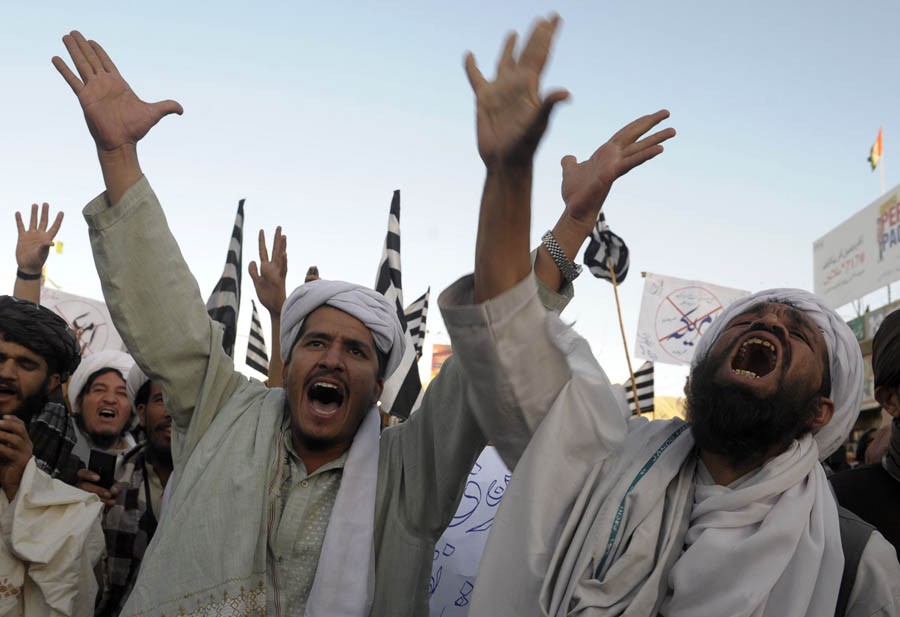
How theo-politics or ulema became so mainstream

My last column evoked a few responses from my fellow academics. It not only gave me an opportunity to think afresh about the concept of Khatam-i-Nubuwwat (the Finality of Prophethood) but was also immensely gratifying to know that my writings are read and reflected upon by some thinking minds.
Therefore, at the outset, I would try to address those points which were necessary but are said to have been omitted from my piece of writing. First omission was the definition of Khatam-i-Nubuwwat and that it was inadequately contextualised. That critique seemed facile and simple. Objectively speaking, the definition of any concept pertaining to socio-cultural beliefs and practices is, in most cases, problematic and may have unsettling fallout for many. It will be like stating the obvious to say that Khatam-i-Nubuwwat acquired the centrality among rest of the postulates because of Ahmadi viewpoint which was not consistent with the mainstream Muslim belief. It will be pertinent to see it in juxtaposition to the Ahmadi belief regarding Khatam-i-Nubuwwat.
While drawing on the earlier Ahmadi sources like "the Review of Religion" and "Anwaar-e-Khilafat", one may figure out the Ahmadi concept of Khatam-i-Nubuwwat and the interpretation of the Khatim-e-Nabiyeen. It was in 1889 that Mirza Ghulam Ahmad propounded a new interpretation of the concept of Khatam-i-Nubuwwat. Generally, Muslims thought that no more Prophet would come after the Holy Prophet of Islam but the Ahmadis’ concept ascribed to a different connotation of Khatim-e-Nabiyeen which meant "No more prophet will come in any religion what so ever in Islam and the person who would be the prophet will be an Ummati and his authority of prophethood will bear the seal of the holy prophet of Islam". This is what they mean by "the Seal of Prophets’’. He will not bring his own laws. But one can draw out a sense according to which "not only one but many prophets would come as the door of divine guidance would never cease".
The real tangle with the Ahmadi concept of Khatam-i-Nubuwwat and Khatim-e-Nabiyeen is that even if their derivative (you may read it as zilli, ummati or subordinate to make it more simple) status is accepted, it would nevertheless be authorised to interpret sharia in an arbitrary manner. The issue of jihad being a case in point. Such interpretation will be binding through the religious (divine) sanction as the one interpreting is the Nabi (though zilli or ummati but Nabi nevertheless). Thus these concepts were a recipe for intellectual anarchy.
Now I will turn to other hole that was picked in my previous narrative that was about Iqbal’s theorisation of Khatam-i-Nubuwwat.
There is no doubt that the only one having theorised Khatam-i-Nubuwwat is Iqbal in his rejoinder to Jawaharlal Nehru entitled ‘Islam and Ahmadism’ but more importantly in his lecture ‘The Spirit of Muslim Culture’ which forms a part of his intellectually very dense book, The Reconstruction of Religious Thought in Islam. How Iqbal justifies that concept warrants a series of columns, an undertaking which I may take up in the future but here, suffice it to say that the way Iqbal argues about Khatam-i-Nubuwwat has brought it out of the realm of religious tradition by re-doing it in the light of modern epistemology. Or to put it in simple terms, Iqbal’s bid therefore is the rationalisation of a Prophet’s religious experience when he proceeded to his heavenly sojourn.
Now I will turn to another personality, Ataullah Shah Bokhari. If Iqbal theorised the concept of Khatam-i-Nubuwwat, Bokhari was the one who vied hard to translate it into a practical reality. Known for his skills of oration and eloquence, Bokhari became an icon of agitational politics. The art of agitational politics reached new heights during the Khilafat Movement (1919-1924) which he along with some other Ahrari leaders perfected in the 1930s. Ahmadis, alleged to be the beneficiary of British colonialists, were the main target of their public meetings with their lengthy sermons. Samina Awan, Ali Usman Qasmi and David Gilmartan have written extensively on the politics of Majlis-i-Ahrar, which re-incarnated itself in 1949 as Majlis-i-Tahafuz-i-Khatam-i-Nubuwwat (MTKN).
Read also: Khatam-i-Nubuwwat and its significance
It was from the MTKN’s platform that the 1953 anti-Ahmadiyya movement was launched. It virtually brought the whole state apparatus to its knees. It could not get Ahmadis to be declared non-Muslims but Khatam-i-Nubuwwat as the central postulate of Pakistani-Muslim identity was firmly established in 1953. Theo-politics became an integral part of Pakistan’s political mainstream, Ulema being a powerful component of it.
That way it can be compared to the Khilafat Movement, which failed to achieve its goals but in its wake many leading Ulema entered the political mainstream. Despite its failure in 1953-54, Khatam-i-Nubuwwat as the key defining feature of Pakistani Muslims kept gathering support throughout until May 29, 1974 arrived. The political careers of Maulana Maududi, Shah Ahmed Noorani, Mufti Mahmud, Yusuf Banori, Abdul Sattar Khan Niazi and Maulvi Abdul Haq got a huge fillip because of that movement. When in May 1974, the Rabwah incident took place as a result of which scores of Islami Jamiat-i-Talaba workers were beaten blue and black, as if religious right was perfectly ready to launch a popular movement from which even the populist leader Zulfikar Ali Bhutto had no escape.
It was a massive retreat by the Pakistani state, and ever since it is conceding ground to the Maulvis who, when closely reflected, always deploy Khatam-i-Nubuwwat as an instrument to assert their own position at the expense of whatever liberals are left in Pakistan.
Concluded